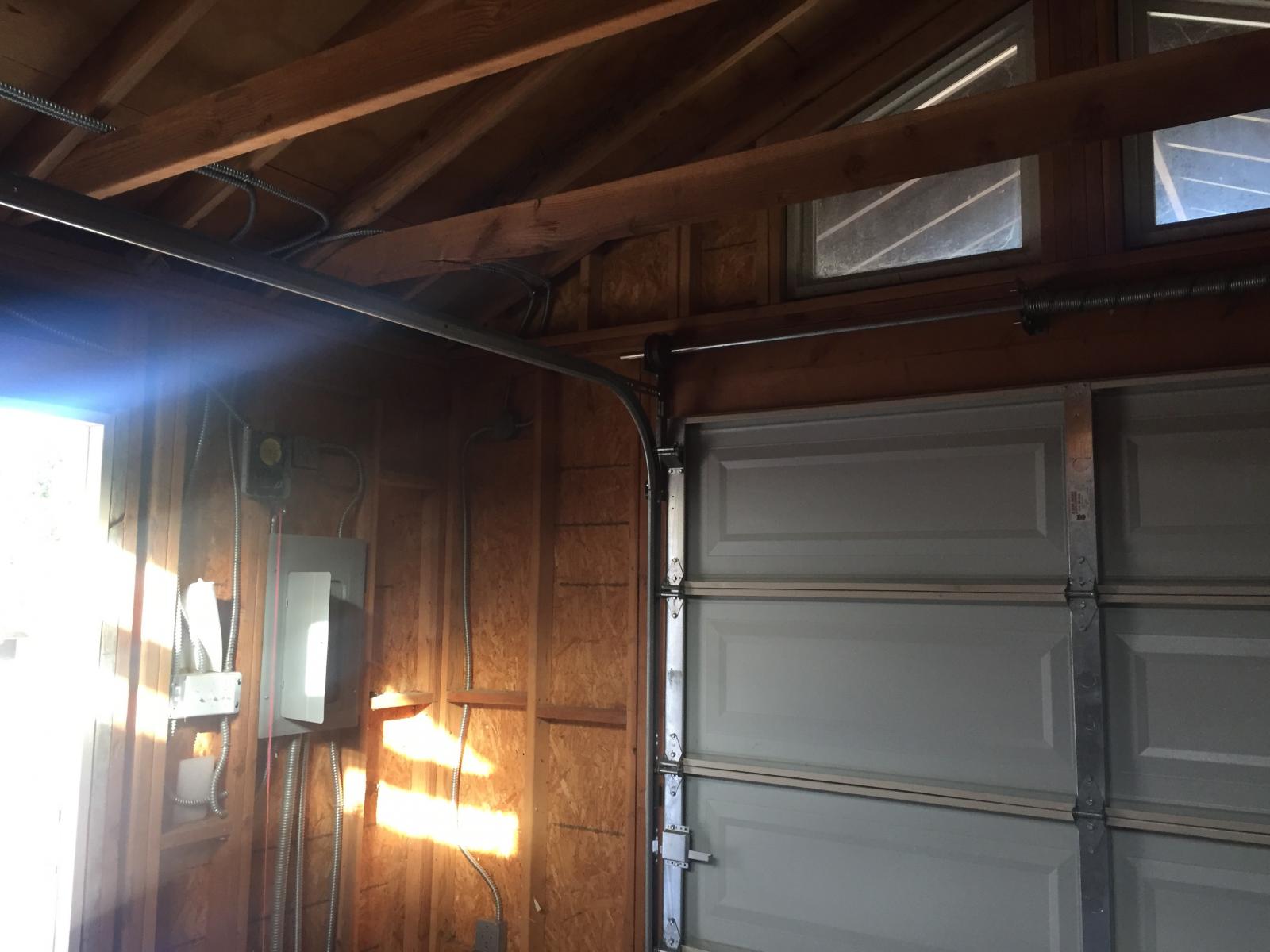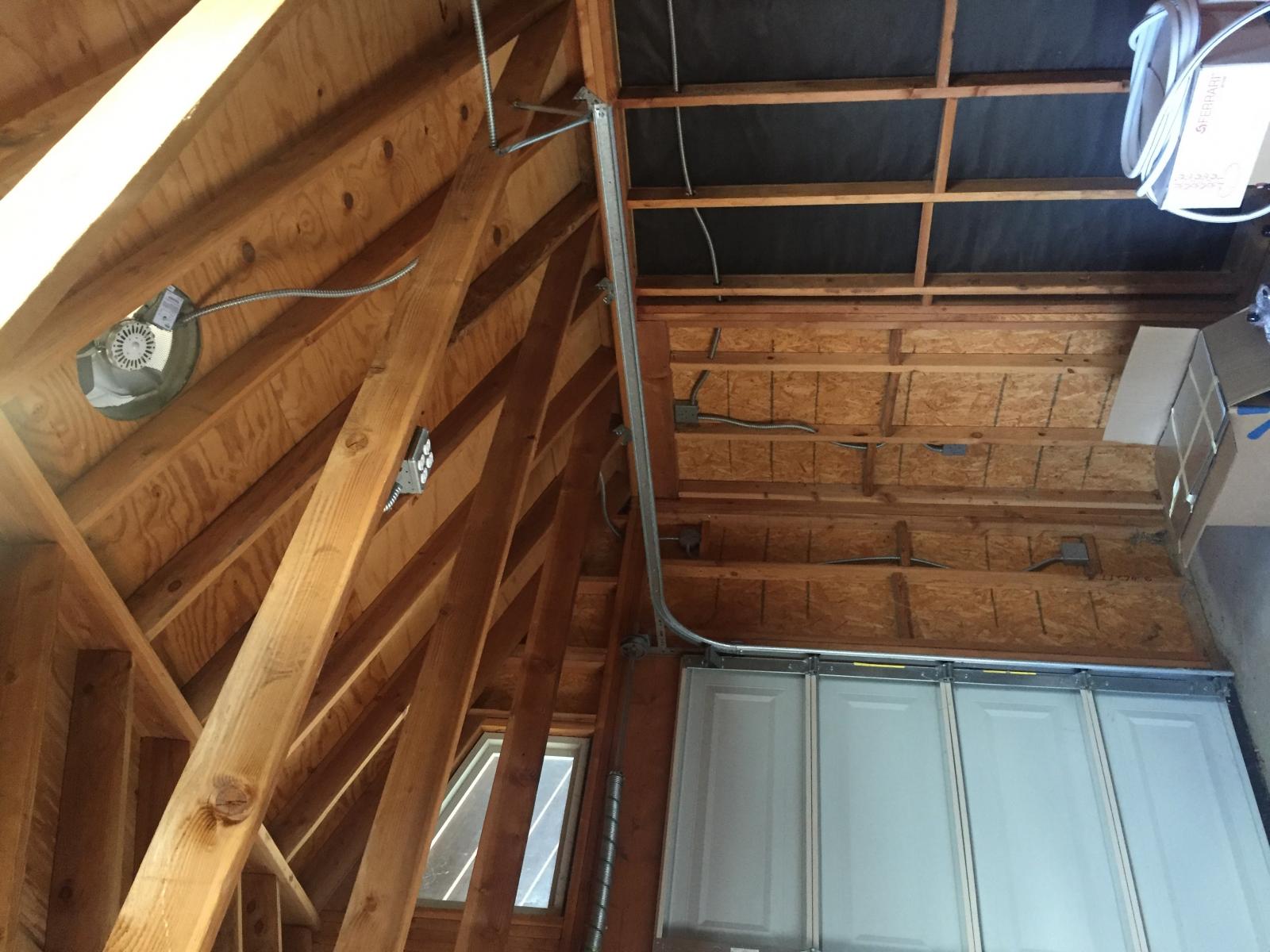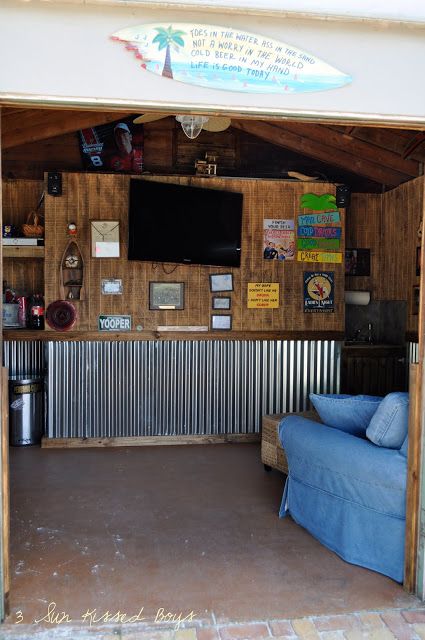Hey all,
My wife and I recently purchased a new home, complete with an outbuilding in the back yard. Originally built to service diesel pusher motorhomes, I think it's much better suited for brewing: 15'x15' enclosed, with a garage door at one end leading to a covered area that extends another ten feet from the building. Best of all, there's power, and drain hookups!
But, it's not finished, probably by design. And because I prefer to not have incest carcasses and spider webs in my brew space... I think I should probably see to that.
Which brings me here. I've got a bunch of questions that I'm hoping a few of you might have some answers for.
I live in Riverside, CA, which is right up on the edge of the desert. For the most part, we have hot, dry, summers, and cool, dry, winters. Humidity does happen, but usually in daily cycles (morning fog or haze), or as part of summertime inversions. But it's not a damp location, by any stretch.
And it is dusty.
When I'm finished, I intend to be running a 30A, single-element PID control panel, and I'd like to have the requisite lighting, a single ceiling fan, chest freezer, fridge (possibly), portable A/C unit, and probably some kind of electric cooling solution.
Anyway, I have a whole slew of questions. I'll try to put them in sensible order, or at least a digestible order. So, without further ado:
Electrical
As I mentioned, there's power to the unit. The subpanel that supplied power is helpfully labeled, and I appear to have a single 100A circuit going out there (actually, it's two 50A breakers paired up, which I assume means 100A), out of a subpanel on the main house. Inside the building, there is another subpanel, with six (6) 20A circuits, and one (1) each 40A, 60A, and... 120A(?) circuit. The last three are actually pairs of 20, 30, and 60A breakers. This leads me to my first two questions:
Also: I have 220V service to the house. I assume this means that, by extension, I have 220V available at this panel. Will I need to do anything special to have a 220V outlet put in? (Other than have a real electrician do it, of course.)
Insulation
This is an easy one: how do I do it? The walls seem straightforward enough, and I'm planning on using plain old fiberglass, because that looks way more affordable than spray foam. But, will I have any issues with the flexible conduit being under insulation? I don't want to deal with permitting issues later.
More frustrating, however, is the ceiling. I need to do that space, as well, but do I really need to put in an air gap? If so, is there a better idea for the ceiling than fiberglass? Blown-in is not a reasonable option. And because of the windows at each end, I want to keep the ceiling vaulted, with exposed rafters.
In a similar vein, because this is a retrofit, what should I do--if anything--about a barrier for the insulation? I can't very well put it up on the outside, though it does appear that there is a layer of heavy black papery-stuff (not like Tyvek--not sure what its really called) over the plywood sheathing and below the finish, which is stucco.
Finally--and I'm at a complete loss here--does anyone have an idea about how to bug-proof the place, or at least mitigate it? I mean, that garage door is really not very well-sealed.
Miscellaneous Matters
What should I finish the walls and ceiling in? My wife likes corrugated steel for the lower portion, at least, but I don't want the whole thing done up in that. I like the idea of pine boards, but that may be susceptible to moisture intrusion. (Yes, I plan to put in a hood over the pots, even though most brew days will have the garage door open.)
Ok, that's all I can think of for now. I think there was more, but my browser crashed trying to upload photos, and I lost the post, had to re-write the whole thing.
Whew! Thank you all, and I really appreciate any help, advice, or insight you may have!



My wife and I recently purchased a new home, complete with an outbuilding in the back yard. Originally built to service diesel pusher motorhomes, I think it's much better suited for brewing: 15'x15' enclosed, with a garage door at one end leading to a covered area that extends another ten feet from the building. Best of all, there's power, and drain hookups!
But, it's not finished, probably by design. And because I prefer to not have incest carcasses and spider webs in my brew space... I think I should probably see to that.
Which brings me here. I've got a bunch of questions that I'm hoping a few of you might have some answers for.
I live in Riverside, CA, which is right up on the edge of the desert. For the most part, we have hot, dry, summers, and cool, dry, winters. Humidity does happen, but usually in daily cycles (morning fog or haze), or as part of summertime inversions. But it's not a damp location, by any stretch.
And it is dusty.
When I'm finished, I intend to be running a 30A, single-element PID control panel, and I'd like to have the requisite lighting, a single ceiling fan, chest freezer, fridge (possibly), portable A/C unit, and probably some kind of electric cooling solution.
Anyway, I have a whole slew of questions. I'll try to put them in sensible order, or at least a digestible order. So, without further ado:
Electrical
As I mentioned, there's power to the unit. The subpanel that supplied power is helpfully labeled, and I appear to have a single 100A circuit going out there (actually, it's two 50A breakers paired up, which I assume means 100A), out of a subpanel on the main house. Inside the building, there is another subpanel, with six (6) 20A circuits, and one (1) each 40A, 60A, and... 120A(?) circuit. The last three are actually pairs of 20, 30, and 60A breakers. This leads me to my first two questions:
- Does anybody have any idea why I have a 120A breaker if I only have 100A coming in; and
- Will these circuits, both internally and overall, be sufficient?
Also: I have 220V service to the house. I assume this means that, by extension, I have 220V available at this panel. Will I need to do anything special to have a 220V outlet put in? (Other than have a real electrician do it, of course.)
Insulation
This is an easy one: how do I do it? The walls seem straightforward enough, and I'm planning on using plain old fiberglass, because that looks way more affordable than spray foam. But, will I have any issues with the flexible conduit being under insulation? I don't want to deal with permitting issues later.
More frustrating, however, is the ceiling. I need to do that space, as well, but do I really need to put in an air gap? If so, is there a better idea for the ceiling than fiberglass? Blown-in is not a reasonable option. And because of the windows at each end, I want to keep the ceiling vaulted, with exposed rafters.
In a similar vein, because this is a retrofit, what should I do--if anything--about a barrier for the insulation? I can't very well put it up on the outside, though it does appear that there is a layer of heavy black papery-stuff (not like Tyvek--not sure what its really called) over the plywood sheathing and below the finish, which is stucco.
Finally--and I'm at a complete loss here--does anyone have an idea about how to bug-proof the place, or at least mitigate it? I mean, that garage door is really not very well-sealed.
Miscellaneous Matters
What should I finish the walls and ceiling in? My wife likes corrugated steel for the lower portion, at least, but I don't want the whole thing done up in that. I like the idea of pine boards, but that may be susceptible to moisture intrusion. (Yes, I plan to put in a hood over the pots, even though most brew days will have the garage door open.)
Ok, that's all I can think of for now. I think there was more, but my browser crashed trying to upload photos, and I lost the post, had to re-write the whole thing.
Whew! Thank you all, and I really appreciate any help, advice, or insight you may have!



Last edited:





